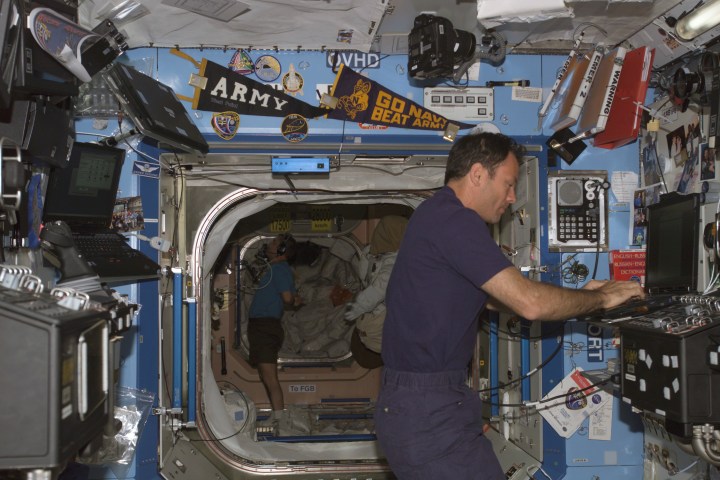
Lacking many of the comforts we take for granted on Earth, basic hygiene is slightly more arduous on the space station. When they’re not performing grueling extravehicular missions, astronauts spend the rest of their live-long days showering in water reclaimed from breath and sweat, drinking recycled urine, and — seeing as fresh laundry is delivered in shipments — wearing the same clothes (including the unmentionables) for days on end. An astronaut who shalt not be named once wrote that he only changed his underwear about once every four days and wore the same pair of space shorts for months while in orbit.
Recently, microbiologists with the University of California, Davis used more than a dozen swab samples from the space station to juxtapose this ecosystem alongside microbes found in a standard household here on Earth. In total, the team identified more than 12,000 (mostly innocuous) species of microbes. This was substantially more “species-rich” than the microbiologists anticipated, however, the results were remarkable for other reasons as well.
The microbes pinpointed in the research didn’t perfectly match with organisms typically found in a terrestrial home or on an earthbound person’s skin. Furthermore, these microbes were overall more similar to ones found on household surfaces than on our skin. As noted by the study authors: “Unlike the ISS, homes on Earth are exposed to a variety of sources of microbes, including the outdoor air, tracked-in soil, plants, pets, and human inhabitants.”
But these microscopic organisms aren’t limited to the interior of the space station by any means. Just last month, Russian astronaut Anton Shkaplerov famously stated cosmonauts had collected bacteria along the exterior of the space station, and went so far as to claim these “alien” microbes had come “from outer space.” This wasn’t the first or last seemingly outlandish claim made by Russian astronauts about microbes on the exterior of the space station. In 2014, cosmonauts claimed to have identified plankton on exterior space station windows. NASA wasn’t initially receptive to either of these claims with a NASA spokesperson stating, “I don’t know where all the sea plankton talk is coming from.”
While we still haven’t verified any real-world Andromeda Strain in orbit, over the years a regular smorgasbord of microscopic creatures have been identified not only surviving but thriving in the unforgiving vacuum of space. So-called “Water Bears” or Tardigrades have lived on the outside of the space station for 10 days even while experiencing more than 100 times the lethal radiation dose a human being could muster. But how can we utilize this data in the interim?
It has been well documented at this point in time, that astronauts who have spent extended periods onboard the space station have lowered immune functions. NASA takes extreme precautions to prevent contamination of not only the space station but also our solar system, however, the ability to study this inadvertent biome in orbit could be beneficial in identifying potentially dangerous pathogens before we send humans on extended missions deeper into the solar system.
Editors' Recommendations
- NASA is seeking help to crash the space station at the end of its life
- Space station’s new robotic arm springs to life
- How to watch SpaceX Crew-4 astronauts launch to ISS
- Axiom-1 to depart from ISS today after extra days in space
- Check out this cool NASA image of SpaceX Crew-3’s ride home


